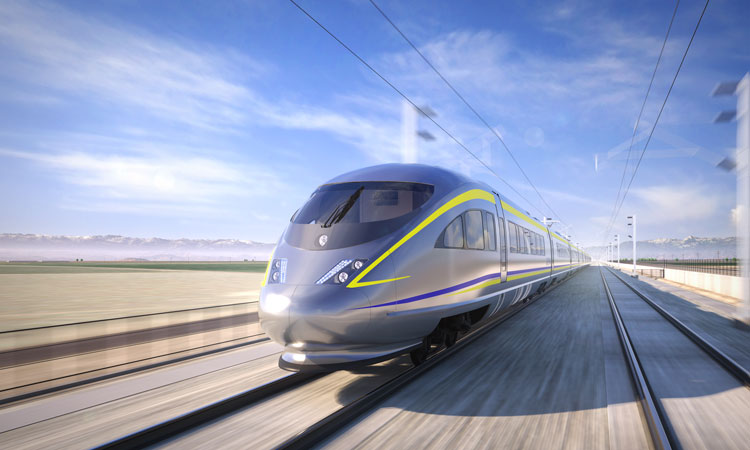California High-Speed Railway Timeline: Part 1
Posted: 17 April 2024 | Emily Budgen | No comments yet
Read Part 1 of GRR’s history of the California High-Speed Railway project, where we chart its origins and key players.


Credit: hsr.ca.gov
The California High Speed Rail Project, run by Authority, is well underway. However, this high-speed development was years in the planning for the state, here’s part one of its history.
The need for a working passenger railway, and the accompanying infrastructure, is fairly clear from the figures. California ranked first with the highest number of registered vehicles in 2019 out of the US states, with a total of 31,247,270. They were then followed by Texas, with 23,007,145, Florida, with 17,833,719, New York, 11,389158, and Ohio, 10,901,279.
An added pressure to the existing infrastructure is the upcoming 2028 Olympic Games, due to be held in Los Angeles. With an increased level of tourism, as well as travelling athletes, members of each nation’s teams as well as security and event staff, the need for quick and efficient transport is clear, in order to avoid disruption and delay.
However, a shift to rail would also be economically advantageous to the area. 99% of the project’s 2022-3 fiscal year expenditures has gone to California businesses and workers, with two thirds of those dollars going to disadvantaged communities, driving economic activity in these areas.
Levels of employment are also positive. At the conclusion of 2023, the California High Speed Rail Authority (Authority), announced the creation of more than 12,000 construction jobs, most of which have gone to Central Valley residents. This is arguably as a result of the project’s total investment of more than $11.2 billion since 2006 in both its planning and construction phases.
“High-speed rail is leading the way toward the Golden State’s sustainable transportation future,” said Authority CFO Brian Annis, in January 2024. “With our continued partnership with the federal government and our local partners, investment in high-speed rail creates good-paying union jobs and generates income to some of California’s most vulnerable people and their communities.”
Pre 1992, the California High Speed Rail project was deliberated at a state level. One of the key characters in its development and discussion was Democratic Governor Jerry Brown, back in 1979, who signed legislation for the studying of a high-speed rail project for the state of California in his early terms.
In 1992, the San Francisco-Los Angeles rail corridor was proposed at a federal level in the Intermodal Surface Transportation Efficiency Act as one of five high speed rail corridors. This act gave significant additional powers to metropolitan planning organisations and was signed into law on the 18th of December 1991. In addition to highway corridors, the Act called for the creation of five high speed rail corridors, the options for which were deliberated for several months before being announced in October 1992.
The first four of these were announced by Andrew Card, Secretary of State for Transport, now a board member of Union Pacific Railroad, while the last were announced by the FRA’s Gil Carmichael. The high-speed corridors named were:
- The mid-west high speed rail corridor, with three links from Chicago, Illinois, Detroit, Michigan, St Louis, Missouri, and Milwaukee.
- The Florida high speed rail corridor, linking Miami with Orlando and Tampa.
- The south-east high-speed corridor, connecting Charlotte, North Carolina, Richmond, Virginia, and Washington D. C.
- The Pacific north-west high speed rail corridor, linking Eugene and Portland with Seattle and Vancouver in Canada.
- The California high speed rail corridor, linking San Diego and Los Angeles with the San Francisco Bay Area and Sacramento via the San Joaquin Valley.
One of the original and principal drafters of the Bill was Jeff Morales, who now resides on the Board of the California High Speed Rail Authority.
This organisation was formed in 1996, as part of a wider scheme to present a plan before being decided by a ballot measure either in 1998 or 2000. However, this was then pushed back to the 2004 election, before the state legislature moved it back twice, first to 2006, then to 2008. In this year, 53% of voters approved the issuing of the $9 billion in bonds for a high-speed railway. With voter approval, the project could start.
Look out for part 2 of our California high speed history corner, where we will look at the different phases of construction and its impact on the sector and workforce.
More Like This
Finland takes a leap towards ERTMS and FRMCS
OFF THE RAILS: Rail Baltic Estonia’s Environmental Expert Kati Saarem
“A call to arms”: how many women work in transport?
Related topics
High-Speed Rail, Hyperloop Technology, Infrastructure Developments, Movers & Appointments, Operational Performance, Passenger Experience/Satisfaction, Regulation & Legislation, Route Development, Sustainability/Decarbonisation, Technology & Software, The Supply Chain, The Workforce, Track Construction, Track Systems, Training & Development
Related organisations
Related people
Andrew Card, Brian Annis, Gil Carmichael, Jeff Morales, Jerry Brown








